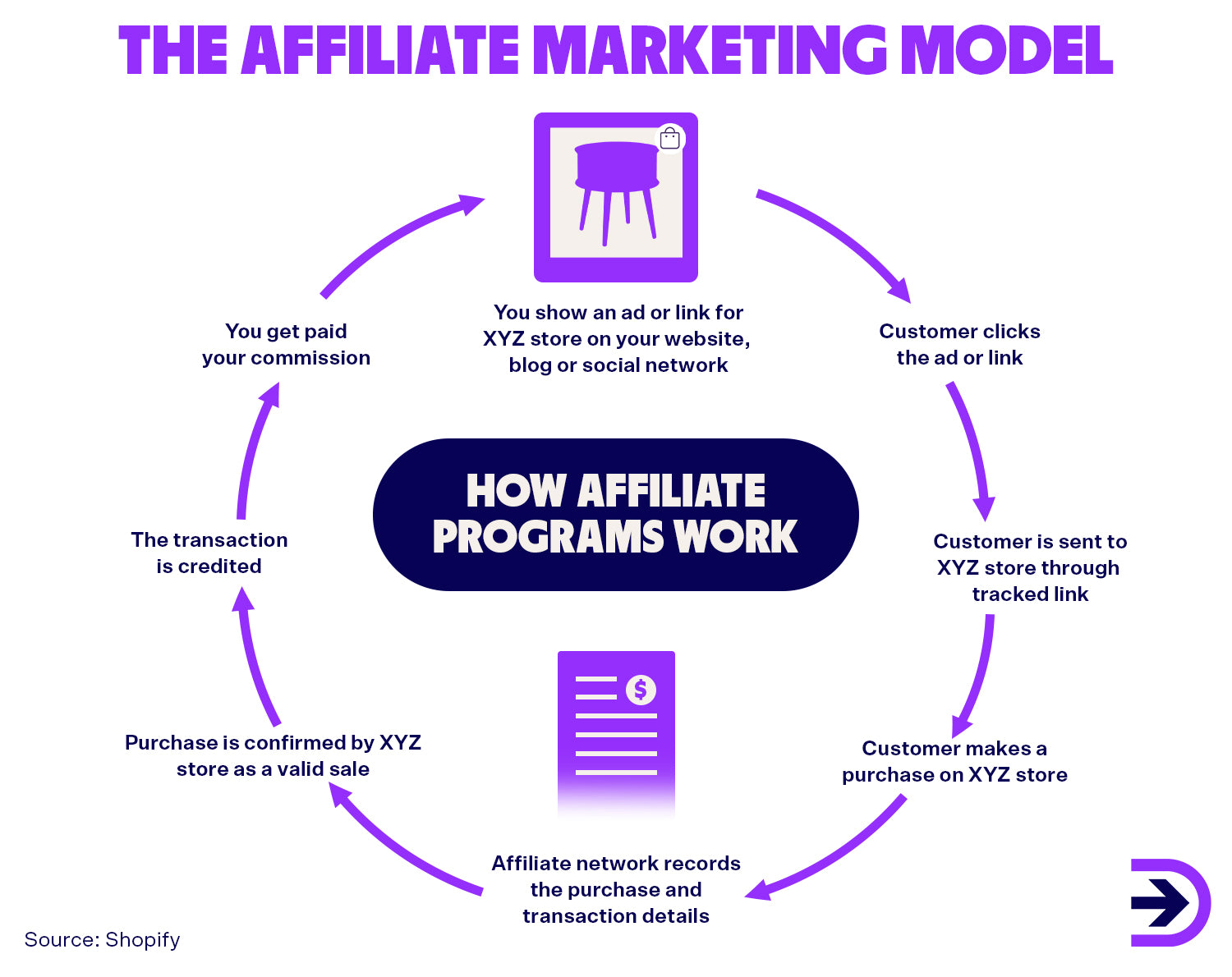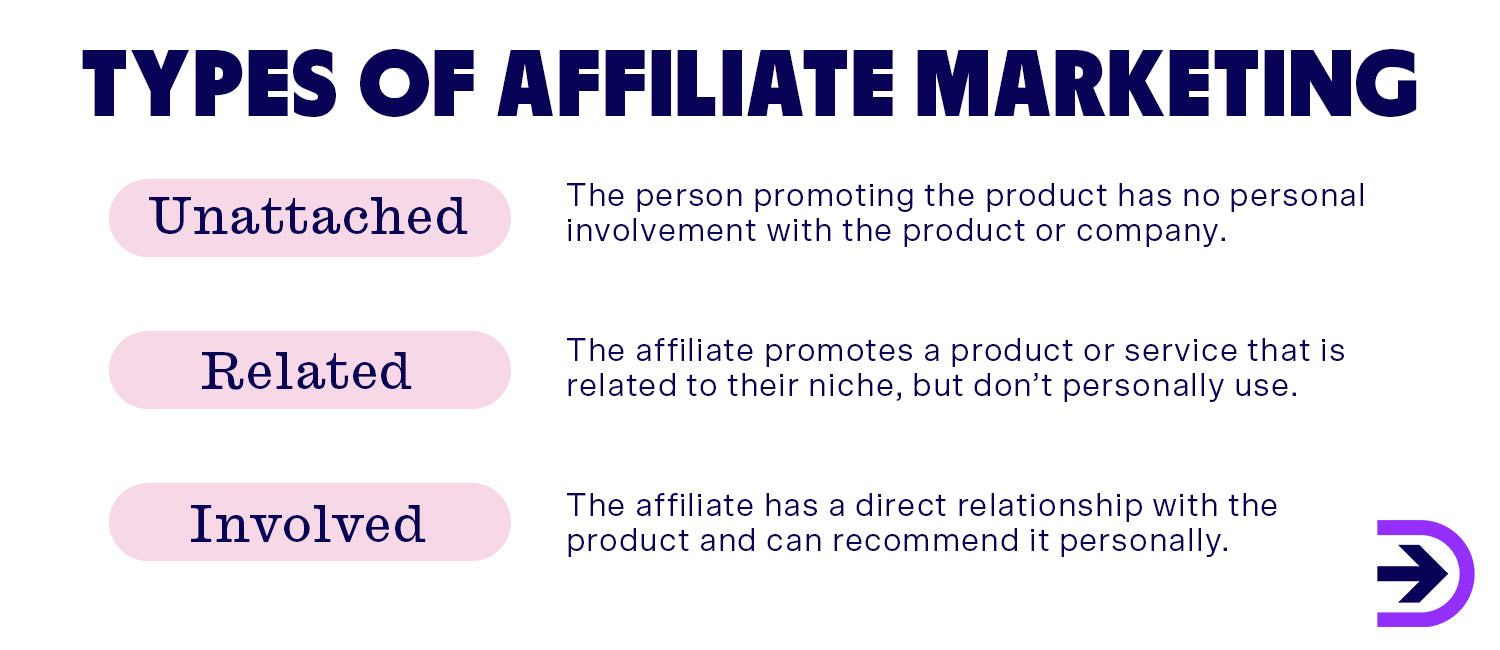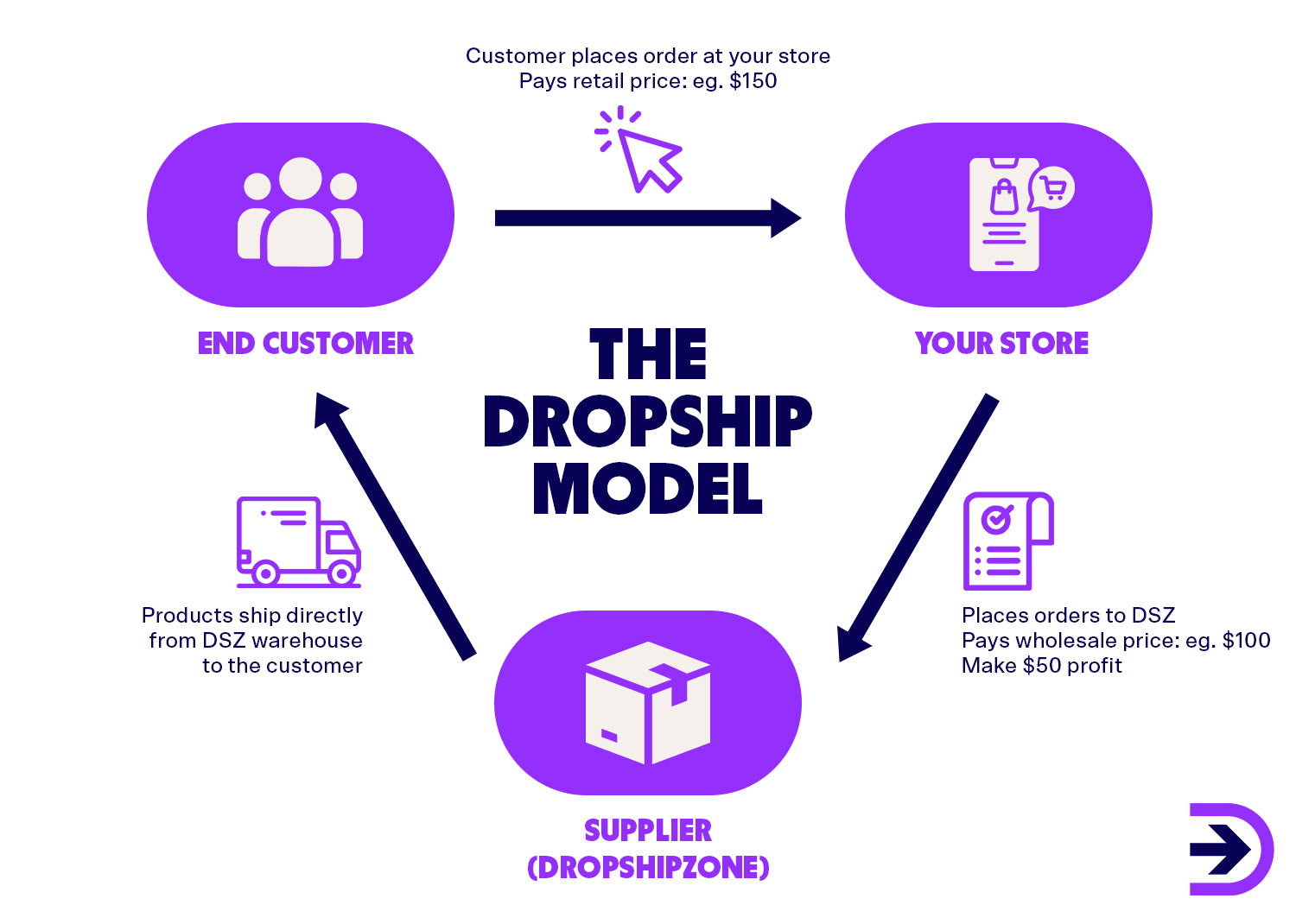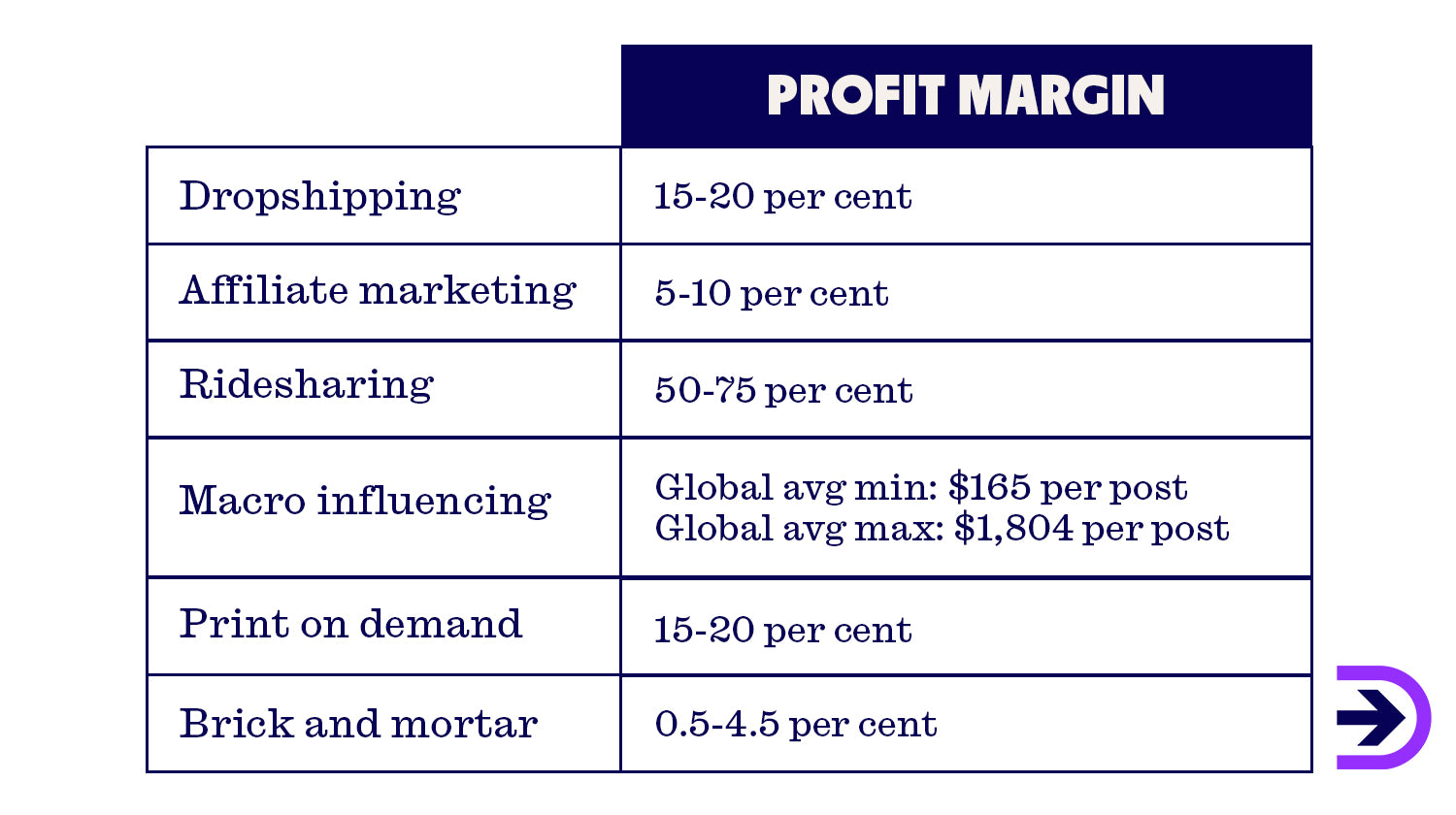
Affiliate Marketing Vs Dropshipping? Which Is More Profitable in 2024?
If you’ve ever dreamed of making money online, you’ve probably stumbled upon two major business models: affiliate marketing and dropshipping. Both promise financial freedom, low startup costs, and the ability to run a business from anywhere in the world. But here’s the big question, which one actually puts more money in your pocket in 2025?
Affiliate marketing lets you earn commissions by promoting other people’s products - no inventory, no customer service, just pure marketing. Sounds effortless, right? Meanwhile, dropshipping gives you the reins of an online store without the hassle of handling stock or shipping. You sell, a supplier ships, and you keep the profits. But which model offers the biggest return on investment this year?
With rising ad costs, shifting consumer behaviour, and the ever-changing digital landscape, yesterday’s winning strategy might not work today. So before you dive into the world of passive income, let’s break down the numbers, effort, and potential rewards to find out which business model truly delivers in 2025!
Affiliate marketing vs dropshipping
Affiliate marketing is a process by which an ‘affiliate’ (someone officially attached to an organisation) earns a commission for marketing another organisation’s product. Sales are tracked through an affiliate link that connects from the affiliate website or posts to the product page. For this reason, affiliates are typically publishers, influencers, or other kinds of content creators.

Dropshipping is a type of order fulfilment process by which a customer orders a product from a retailer, who then passes the order on to a third-party supplier for manufacturing and distribution. This model outsources logistics, such as shipping and inventory, making it a great option for a low-overhead, low-risk startup. Although they sound like completely different businesses, there are similarities between the affiliate marketing model and dropshipping, especially if you are considering starting an online business.
What do dropshipping and affiliate marketing have in common?
Here’s a breakdown of their similarities:
-
Both are thriving online industries that are only expected to rise. Affiliate marketing boasts a value exceeding $17 billion globally, with projections suggesting growth to approximately $27.78 billion by 2027, while the dropshipping market size is expected to reach upwards of $434.98 billion in 2025.
-
Both dropshippers and affiliates oversee product promotion.
-
You don’t need to hold inventory. In affiliate marketing, products and codes are sent to you for review. With dropshipping, suppliers are in charge of inventory management and shipping.
-
There are low barriers to entry. You don’t need a marketing degree, significant starting capital or infrastructure - you just need motivation and an internet connection.
-
You can start with a minimal initial investment. Affiliate marketers are often supplied with products to review, and sometimes even equipment. Dropshippers will have to pay for their products and site maintenance, but the costs are significantly less than a traditional brick-and-mortar business.

What are the major differences between dropshipping and affiliate marketing?
Here’s a breakdown of their differences:
-
While both industries involve promoting products you don’t own, the legal responsibilities are different. A dropshipper will have customer service obligations and must abide by the Australian Consumer Law. Affiliate marketers cannot engage in misleading or deceptive conduct regarding the goods they are promoting, and must disclose commercial relationships between themselves and the third party they are promoting. This may mean including clear links or mentioning these relationships in your captions and terms of service.
-
Complaints about dropshippers usually target the business. Affiliates are more likely to be personally targeted, which could damage their professional and personal reputation.
-
You can set your own prices in dropshipping, but affiliate marketing has fixed commission rates that are typically stipulated by the organisation and out of the affiliate’s control.
-
Dropshipping payments will go through as soon as the customer pays for the order. Affiliates have to rely on their clients and may have to chase up payments.
Affiliate marketing
Affiliate marketing provides a way to earn money by recommending other products or services. This style of marketing works through the power of recommendations.
E-commerce is thriving, with research showing that 1 in 5 Australian households shopped online weekly in 2024, a sharp rise from just 5% in 2018. Consumers are also becoming more research-driven, using multiple channels before making a purchase. Over the past year, more than half of surveyed shoppers researched products on Google, Ebay, and Amazon. Social media plays a major role in product discovery, with 64% of 18-24-year-olds researching on Instagram, 67% of 26-35-year-olds using Facebook, and 60% of 18-25-year-olds discovering products they purchased through social platforms. Overall, 64% of users find new brands and products via social media, while 23% rely on recommendations and comments.

Most marketers will be familiar with influencers. Influencers may or may not use affiliate marketing as part of their brand strategy. Influencers are at the forefront of affiliate marketing because they take advantage of parasocial interaction – that is, the idea that celebrities and online personalities create one-way relationships with fans, where the audience feels familiar with them and sees them as a friend or family member. The data has shown that micro-influencers are more trusted than celebrities. In fact, 85 per cent trust influencer sponsored posts more than celebrity endorsements. When the audience sees relatability, their trust factor increases, making influencer recommendations more impactful. It’s no longer just physical friends and family we trust, but our online friends (and brands) who we have never met. Of course, this trust doesn’t just appear overnight but requires a knowledge of the social media platform and a consistent effort to cultivate a following.
Most marketers are familiar with influencers, but not all influencers use affiliate marketing as part of their strategy. Influencers play a key role in affiliate marketing by leveraging parasocial interactions - the one-sided relationships where audiences feel personally connected to them, as if they were friends or family. Studies show that micro-influencers are more trusted than celebrities, with 85% of consumers placing more faith in influencer-sponsored posts than in celebrity endorsements. This trust stems from relatability. When audiences see influencers as authentic and approachable, their recommendations carry more weight. Today, trust isn’t just reserved for friends and family, people also rely on online personalities and brands they’ve never met. However, building this trust takes time, platform expertise, and a consistent effort to engage and grow a loyal following.
In another study by HubSpot, 21 per cent of users bought a product based on influencer recommendations. Considering that 77 per cent of Gen Z individuals (ages 13-24) and 50 per cent of Millennials follow social media influencers, it’s easy to see how affiliate marketers can have significant sway over a consumer’s purchasing decisions.
Types of affiliate marketing
The following are the types of affiliate marketing:
Unattached affiliate marketing
The affiliate marketer has no connection to the product or service, nor any related knowledge or skills relating to the product. The lack of attachment absolves them of personal liability if the product does not meet expectations because they do not need to make any recommendations.
This type of affiliate marketing is usually performed via affiliate links through Google Ads or Facebook Ads. It may be an attractive way to earn passive income. However, as a low stakes game, it may also produce low returns for affiliate marketers. As an affiliate, there is no guarantee that your target audience will engage with your ads in these channels.
Related affiliate marketing
The affiliate marketer is related to the product or service by industry, niche, or another relation. They don’t necessarily use the product or service. They don’t make any claims about the product or service, but their authority on the subject makes them a trusted source.
For example, if an affiliate is a beauty influencer, they may have a contact who works for a major player in the beauty industry. That contact may be hosting a product launch event. The affiliate may choose to promote this event with an affiliate link, choosing to leverage their authority in the beauty industry and trust in their contact. This can work in both parties’ favour, but it could also backfire depending on product/market fit.
Involved affiliate marketing
The affiliate marketer typically has a deep connection to the product or service they are promoting. They have used or currently use the product or service and they are confident that their positive experience can be replicated and shared. As such, recommendations are more likely to be sincere, positive, and backed by real-life experiences. This is commonly used in services-based marketing, with Audible, Squarespace and Skillshare all having large affiliate networks.

Pros and cons of affiliate marketing
There are many opportunities for affiliate marketers, especially considering more than 81 per cent of brands have or use affiliate programs. With so many opportunities, there is much growth potential for both brands and affiliates.
With affiliate marketing, there is no store to manage and no logistics like inventory management and shipping, which translates to less overhead costs. Content creation can be as easy (or as complicated) as desired. Many content creators work straight from their phones, while others may choose to invest in specialist equipment.
As with anything, there can be drawbacks to affiliate marketing. With low barriers to entry and plenty of opportunities, it is a competitive market. Affiliates need to work harder to stand out, especially in 2024, when many people are self-employed or working in the gig economy. There is potential for an affiliate’s marketing budget to balloon, especially when subscription services get involved.
Affiliate marketers also don’t set their commission rates – rather, the affiliate program sets their rates. The contract may also stipulate that certain thresholds are met before payment, so underperforming can mean missed paychecks. Speaking of missing pay, affiliate programs may not stick to a regular payment schedule. That means any financial issues on their end, or the brands they’re working with, may delay payments.
In terms of creative control, affiliates are restricted by whatever rules are set out by the affiliate program or brand they’re working with. This limits how the brand can be presented, what topics can be discussed, and what imagery can be used.
Finally, growing an audience and a following requires time and patience – it’s not a get-rich-quick scheme. It involves market research, content creation, and regular audience engagement. Success may ultimately depend on the level of effort and time investment.
Start up costs of affiliate marketing
The startup costs of affiliate marketing will vary depending on time, effort, and the affiliate’s existing online presence. Let’s break down the main cost categories:
Startup
Startup costs include legal requirements, such as business registration, but may also include the cost of renting an office space or buying accounting software. Most of your initial costs will probably fall under this category.
Marketing
Marketing costs will include anything you need to grow and drive traffic to posts, blogs, and websites that contain affiliate links. This can include email marketing software, content management systems, or buying ad space.
Tracking and analytics
Tracking includes any tools that help measure data, from post engagement to your earned commissions. Many affiliate networks will have their own tracking software that tracks clicks and earnings. You may also benefit from web analytics services to improve your website and posts, such as Google Analytics and Google Trends. There are many tools available that are free or offer free trials or plans, making it easy to try before buying.
Profitability of affiliate marketing
Affiliate marketing is performance-based. With endless brands and products looking for affiliates, it may be easy to find a gig, but it means nothing without the motivation to succeed. Driving traffic to your posts or website, maintaining an online presence, and increasing your click-through rate are all on you. Of course, this means there is no end to earning potential for the right person partnering with the right product.
Affiliate programs differ in their compensation packages. For instance, the Amazon Associates program offers up to 12 per cent, while eBay’s Partner Network offers 4 per cent for most qualifying transactions.
How to find affiliate business opportunities
There are many ways to look for an affiliate marketing program:
-
Google search.
-
Affiliate directories.
-
Examining your competitors.
-
Going to a brand’s website and signing up for their affiliate program directly.
The list of affiliate programs is endless. When looking for the right affiliate program, consider these points:
The type of products
You should look for a company, and a product, that fits your niche and expertise. You may also want to choose a product that you’re sure you can positively endorse.
The business reputation
Do people generally trust this company? Is it well-known, long-established, or well-reviewed? Does it have a good reputation overall? The more reputable a company, the less likely you are to get scammed, see delays in getting paid, or encounter other issues.
The rates
Don’t be afraid to shop around for competitive commission rates. These can differ wildly, but your ideal rate should take into account the type of commission (usually percentage), payout model (are they pay per action or pay per sale?) and the product being sold (is the commission rate high because the product is hard to promote?).
The cookie lifetime
A cookie is a small block of data that is placed on a user’s computer, usually to save browsing data or credentials. In affiliate marketing, these cookies track affiliate referrals. These cookies expire after a set amount of time, at which point you will stop earning a commission. The longer the cookie lifetime, the longer you have to generate income, so choose a company where you can make the time count.
Dropshipping
Dropshipping is an order fulfilment method that has risen in popularity over the life of the internet and the rise of ecommerce. A customer can order from a dropshipper, who will then forward the order to a supplier who then handles manufacturing, shipping and handling.
Suppliers will sell to dropshippers at wholesale prices, while dropshippers are free to set their own price to reflect shipping, digital marketing and other costs. It's a popular way to break into ecommerce because it doesn’t require holding any inventory, just like affiliate marketing.

Pros and cons of dropshipping
As with affiliate marketing, dropshipping has a wide range of opportunities and low risk. Anyone can start quickly with very little overhead costs. There are many ways to open a dropshipping store: it takes just a few minutes to set up a Shopify storefront, and if you use a service such as Dropshipzone, you’ll also have a world of vetted suppliers, products and shipping options at your fingertips, plus full customer support. Dropshipping is a flexible business that can be run from anywhere – home, a shared office space, the local library, anywhere with an internet connection. Dropshippers can work as many or as few hours as they want – the more effort put in, the more results.
When choosing products, there are plenty of suppliers and marketplaces. A full list of vetted suppliers is available through Dropshipzone or any legitimate dropshipping directories such as Salehoo, Worldwide Brands and Aliexpress. Like with affiliate marketing, there is no inventory needed. Even if ordering products to test, there is no need to order them in bulk like you may have in the past. Finally, the business is easy to grow, or it can be kept as a niche small business.
While there is low risk and low overhead, there is also high competition. Not only will dropshippers be competing with other dropshippers, but they’re unlikely to have an exclusive relationship with suppliers, so stores may have to compete against identical products - the only difference being the price and branding. Dropshipping also has lower profit margins than traditional retail. This may be a hurdle for new businesses, but can be easily overcome as time passes and the business gains a following. Dropshippers are also in charge of customer service, which poses unique problems. Sellers don’t have direct control over product quality, shipping issues or inventory tracking, but will be the first point of call for any customer complaints. If the supplier is not an active communicator, you may have trouble solving customer complaints promptly, leading to poor reviews.
Start up costs of dropshipping
The main startup costs of dropshipping will depend on where you choose to host your store and what domain name you would like to use. When dropshipping, you generally will sell from an ecommerce store on your own website. As of 2025, Shopify has a wide range of plans starting at AUD $42/month when billed once annually. You can buy a domain through Shopify for as low as AUD $14 to AUD $50 annually, depending on the specific domain name and extension you select. This isn’t including free trials and other deals that may be running at any particular point in time.
Other costs to consider before dropshipping
-
Cost of product validation: You may want to place a test order for the products that you plan on selling in your online store.
-
Cost of marketing: This could include creating and scheduling social media posts, using Google Ads or Facebook Ads, or hiring a graphic designer. Going meta, you may even want to hire your own affiliate marketer!
-
Directory fees: Some dropshipping directories charge subscription fees to access their database.
-
Cost of business name registration: In Australia, as of 2025, it costs $44 to register your business name for one year, and $102 for three years. You need to register a business name to conduct any business under a name other than your personal name. This is a legal obligation.
There are some red flag 'costs' to watch out for when starting dropshipping and selecting suppliers. For example, a legitimate supplier should not charge a fee for exclusivity or a subscription to purchase specific products on an ongoing basis.
Profitability of dropshipping
Dropshipping can be a very profitable business, but it shouldn’t be considered a ‘get rich quick’ scheme. It typically has low-profit margins compared to traditional retail, with the average dropshipper making between 20-30 per cent profit from each sale. You can increase your profit margins by dropshipping more high-ticket items or increasing your prices, but the real key is market research. Knowing exactly what products are in demand, for who and where, is crucial to being successful at dropshipping, no matter whether you choose an inexpensive product or a high-ticket item.

The good news is that ecommerce is thriving, across every business. People are more likely to buy products online than ever before, and it’s never been easier to sell online. The global dropshipping market was valued at $351.8 billion as of 2024, a 23.6 per cent increase from the year prior. Experts predict a 24.39 per cent average annual growth rate of dropshipping between 2020 and 2026, when the industry is projected to surpass $500 billion. With online shopping showing no signs of stopping, it seems like a promising investment.
How to find dropshipping opportunities and get started
Getting started is as easy as making a personal commitment to improving your business acumen. Do market research to choose the right niche for you, get your important documents in order (including your ABN), and prepare to find your ideal dropshipping supplier.
The best part of dropshipping is that you can create your own opportunities – you don’t necessarily need to go out and find them. With the right research, you can set up your own online store and find your own suppliers independently, with or without directories.
But that’s not even the easiest route – there are a lot of ways you can start dropshipping, including joining a turnkey dropshipping platform like Dropshipzone.
Is affiliate marketing or dropshipping the best choice for me?
Both affiliate marketing and dropshipping have their advantages, but what works best for you will come down to individual tastes and work styles.
Affiliate marketing involves a lot of content creation and basic knowledge of SEO, but it is more hands-off than dropshipping. If you already have a large following on social media and are looking for an extra income stream, it may be a good option. If you have little to no social media presence, it’s going to take a lot more work, but it’s low risk and may work if you are consistent and patient.
Dropshipping is a lot more hands-on as it involves customer service on top of content creation, but you are more likely to see profits early on. Of course, there are plenty of ways you can automate your business too, with various tools available on any platform. If you are a motivated business owner, your dropshipping business should pay for itself and more.
If you are looking for the lowest upfront investment, more free time, or a supplementary income stream, affiliate marketing may be a better choice. If your goals are financial freedom and you want the potential for growth, dropshipping is an ideal choice for you.
Dropshipzone is Australia’s B2B2C marketplace that connects Retailers and Suppliers. When you join as a Retailer, Dropshipzone gives you access to thousands of products sold by hundreds of verified Suppliers with stock held locally in Australia. If you join as a Supplier, You gain access to thousands of Retailers eager to sell your products via their online stores. Dropshipzone also offers personalised customer support from a dedicated team of account managers in Australia.
Furthermore, it’s easy to get started with Dropshipzone whether you’re a Retailer or Supplier. So, what are you waiting for? Sign up with Dropshipzone today.



